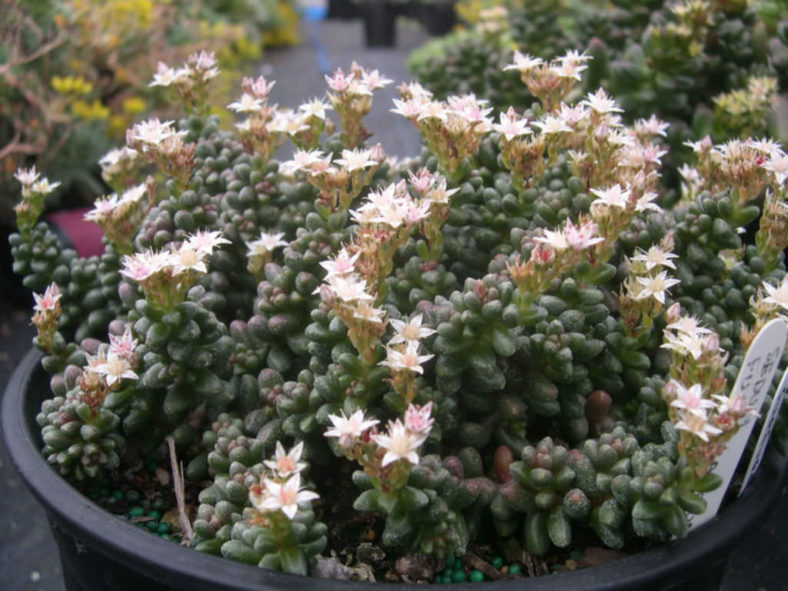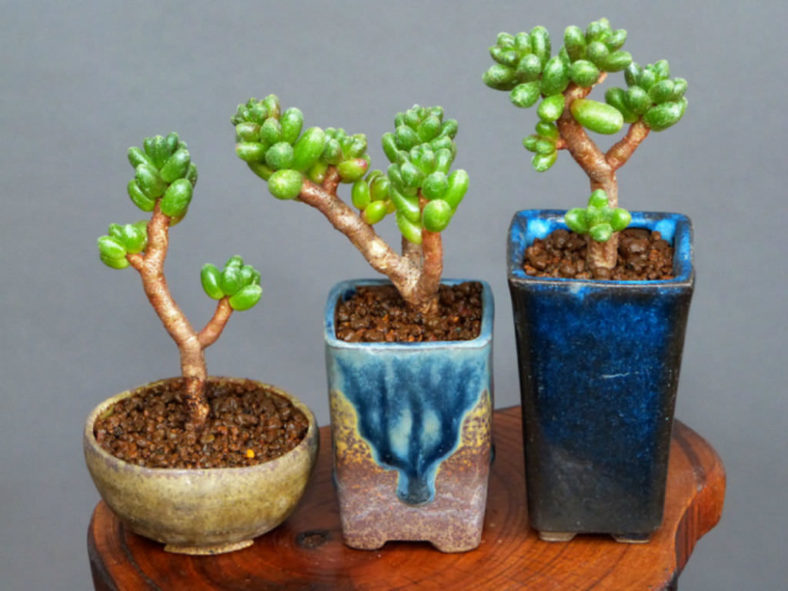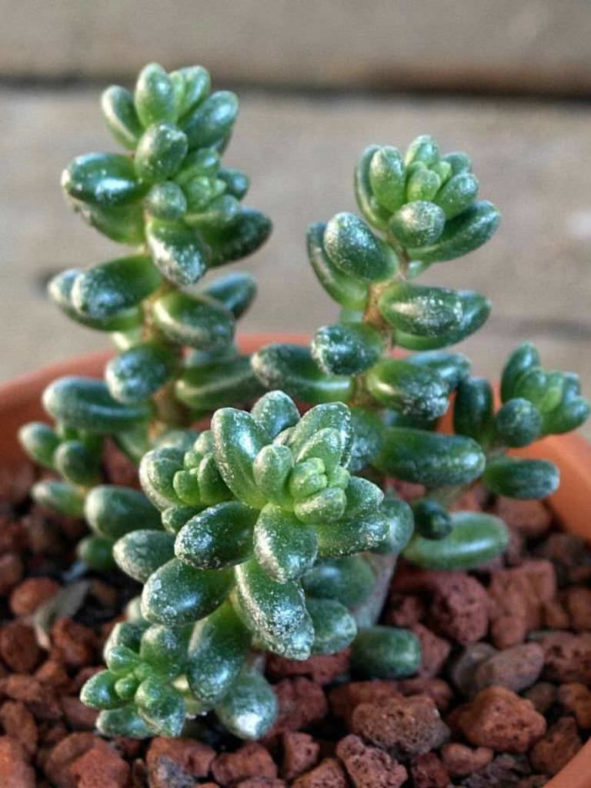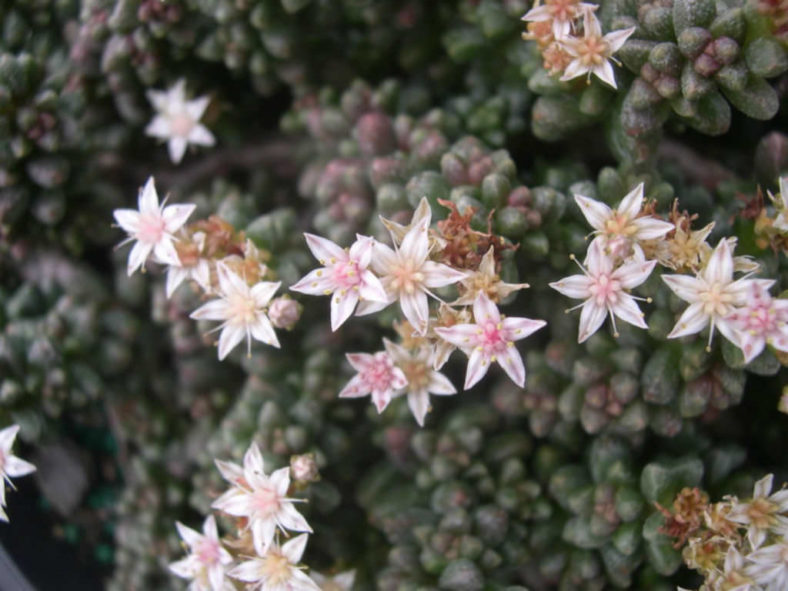Scientific Name
Sedum furfuraceum Moran
Common Name(s)
Bonsai Sedum
Scientific Classification
Family: Crassulaceae
Subfamily: Sempervivoideae
Tribe: Sedeae
Genus: Sedum
Etymology
The specific epithet "furfuraceum" (pronounced "fur-fur-AH-see-um") means "scurfy" and refers to the scurfy coating on the leaves of this species.
Origin
Sedum furfuraceum is native to Mexico. It occurs in San Luis Potosí and Guanajuato, growing on rocks on pine-covered hillsides at about 6,890 feet (2,100 m) above sea level.
Description
Sedum furfuraceum is a low-growing succulent with dark green, egg-shaped leaves covered in scurfy, whitish scales and arranged in tight whorls of five around prostrate to ascending, sparsely branching stems. It can grow up to 6 inches (15 cm) tall, spreading slowly to 1 foot (30 cm) wide or more. The leaves can measure up to 0.45 inches (1.1 cm) long and 0.25 inches (0.6 cm) in diameter. They are often reddish-purple in bright light. The lower leaves turn reddish-orange and later drop off, exposing thick, twisted, gray-white stems.
The flowers are whitish to purplish-red, star-shaped, 5-merous, appear solitary or in clusters of three at the end of the branches in early spring, and last for about ten days.

Hybrids of Sedum furfuraceum
How to Grow and Care for Sedum furfuraceum
Hardiness: USDA hardiness zones 9b to 11b: from 25°F (-3.9°C) to 50°F (10°C).
When growing Sedums, keep in mind that these plants need very little attention. They thrive in conditions that many other plants do, but will do just as well in less hospitable areas. They are ideal for that part of your yard that gets too much sun or too little water to grow anything else. Sedum's common name is Stonecrop because many gardeners joke that only stones need less care and live longer.
Sedum is easily planted. For shorter varieties, laying the plant on the ground where you want it to grow is usually enough to get it started. The plant will send out roots from wherever the stem touches the ground and the root itself. If you would like to ensure further that the plant will start there, you can add a very thin covering of soil over the plant.
For taller varieties, you can break off a stem and push it into the ground where you want to grow it. The stem will root very easily, and a new plant will be established in a season or two.
Learn more at How to Grow and Care for Sedum.
Links
- Back to genus Sedum
- Succupedia: Browse succulents by Scientific Name, Common Name, Genus, Family, USDA Hardiness Zone, Origin, or cacti by Genus
Photo Gallery
Click on a photo to see a larger version.


